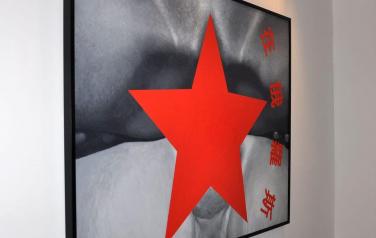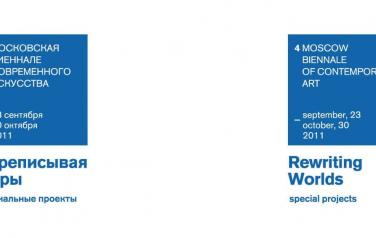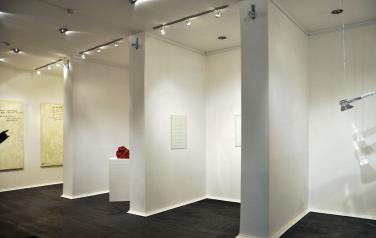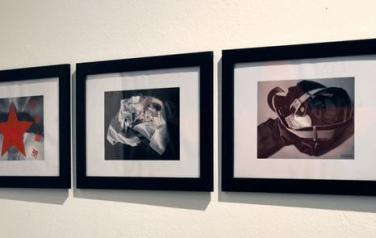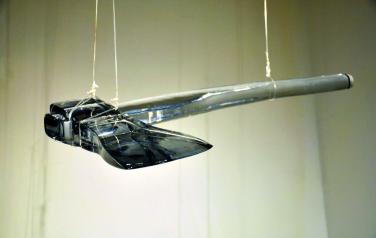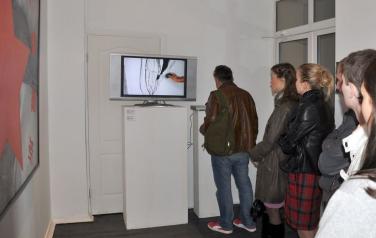Artists:
- Dmitry Gutov
- Anatoly Osmolovsky
- Victor Alimpiev
- Kolesnikov/Denisov
- Oleg Tarkin
- Masha Naimushin
Organizers: Moscow Museum of modern art;EN Агентство.Art
Curators: Kolesnikov/Denisov, Masha Naimushin
The Government Of Moscow
The Department of culture of Moscow
Russian Academy of arts
The significance of visual elements in contemporary art is a subject of debate among the Russian artistic community. The prevailing role of idea points to a changing role of form, material, colour, texture, urability, and the presence of an object as such in the work of art. Conceptual approach has diminished the role of all that is palpable and visual to secondary, and yet we still consider conceptual art to be visual. The choice of every element or technique becomes more then a mere part of making — they become a pronounced gesture, and a statement about the importance and role of itself. Thus colour — or the absence of it — which once used to be one of the main artistic tools has become an intellectualized address at its own meaning, perception, and function.
At the end of the fifties, an Italian artist Piero Manzoni, under the influence of monochromes by Yves Klein, has produced a series of works entitled ‘Achromes’. Although Manzoni’s ‘Achromes’ have not been the first attempt to abandon colour, they have articulated the theme of colourlessness, as a whole new direction of search of the meaning and use of colour in art.
In the Russian Orthodox tradition, from the time of the Church Fathers, colour has been linked to the emotional realm, and thus required a cautious approach. Gregory of Sinai, who has been and still is widely respected in Russia, urged his disciples to keep their minds ‘colourless’. Artist Andrey Monastyrsky quotes Gregory of Sinai in his essay ‘In Kashirka’, where he gives an account of his ‘colour obsessions’ — a state of mind, into which Monastyrsky had been driven by his spiritual experiments. Even if not influenced directly, artists of this exhibition are certainly familiar with the Orthodox tradition and its approach to colour, if not rooted in it.
The art exhibition ‘Achromatism’ is a glimpse on the use of colour in contemporary Russian art. The selected works are brought together not by the absence of colour, but by an artistic vision, in which colour ceases to be a protagonist in its own right. In the ‘Achromatism’ exhibition we see how the use of colour
has changed, and how colour is no longer meant to contribute psychological qualities or emotional energies. From deep red in the work by Analtoly Osmolovsky to the absolutely transparent in the work by Oleg Tyrkin, colour is no longer the emancipated active force employed by abstractionists, but rather a sign. It functions as a word, perhaps like ‘red’ in the ‘Red Square’ by Kazimir Malevich. Colour is no longer a mere physical component for the art of painting, contributing to the work its emotional powers. For Dmitri Gutov and Kolesnikov/Denisov, it is a carrier of the idea, which builds a complex system of associations and meanings. For Victor Alimpiev colour is totally subordinate to form and volume.
‘Achromatism’ represents works by important Russian artists, which mark, notwithstanding contrasting artistic approaches and methods, a path of complex balance between the idea and the employed visual elements.
Masha Naimushina
